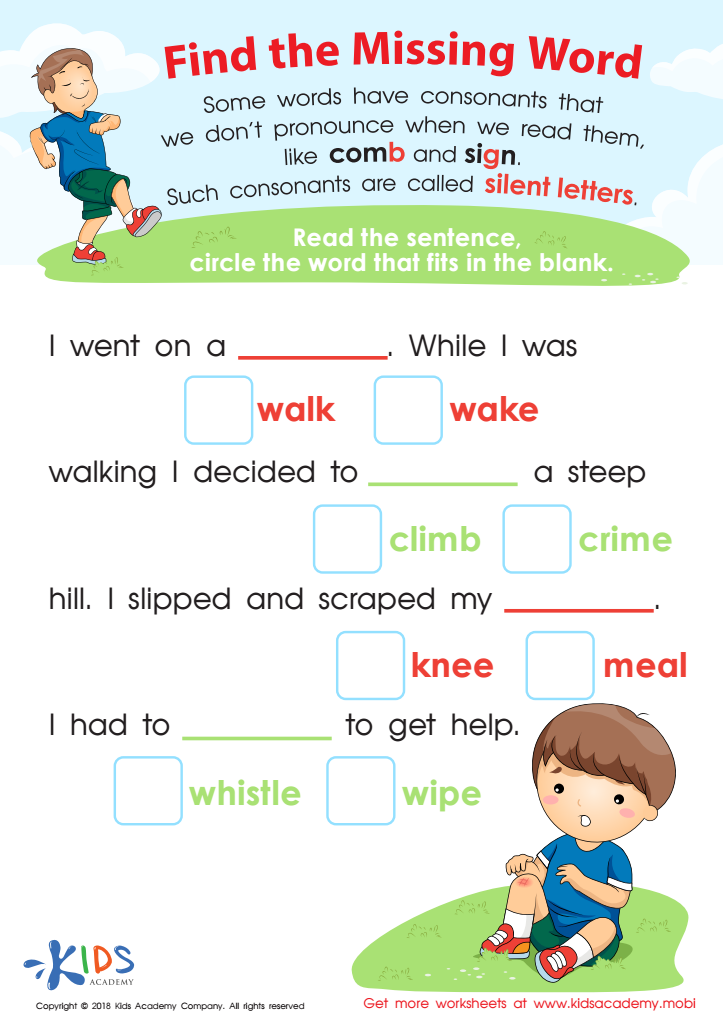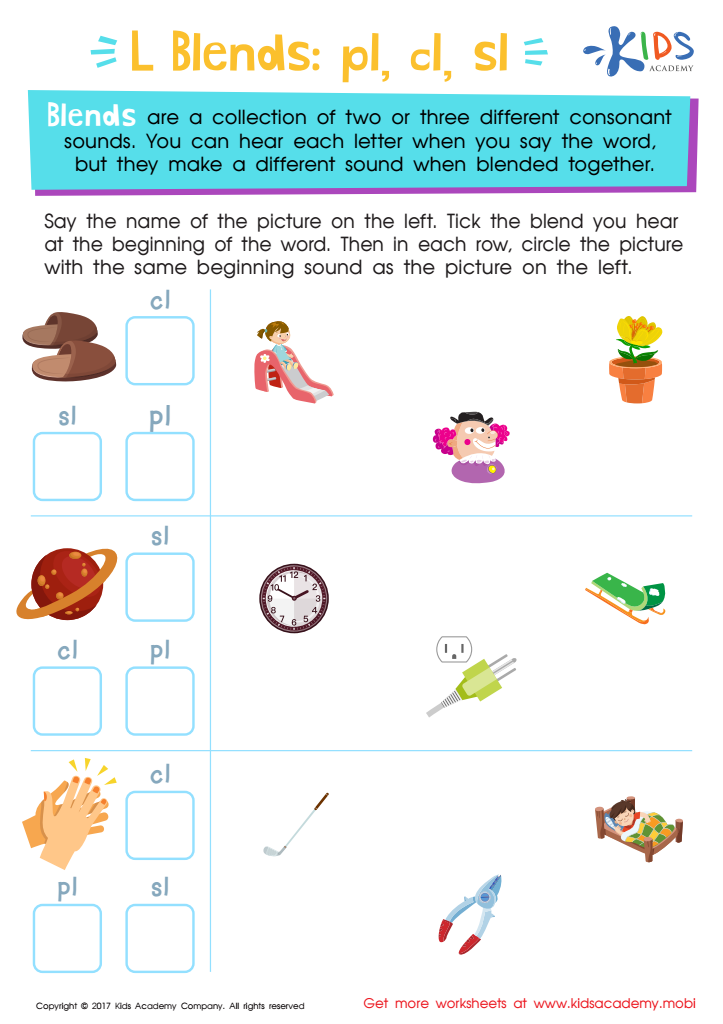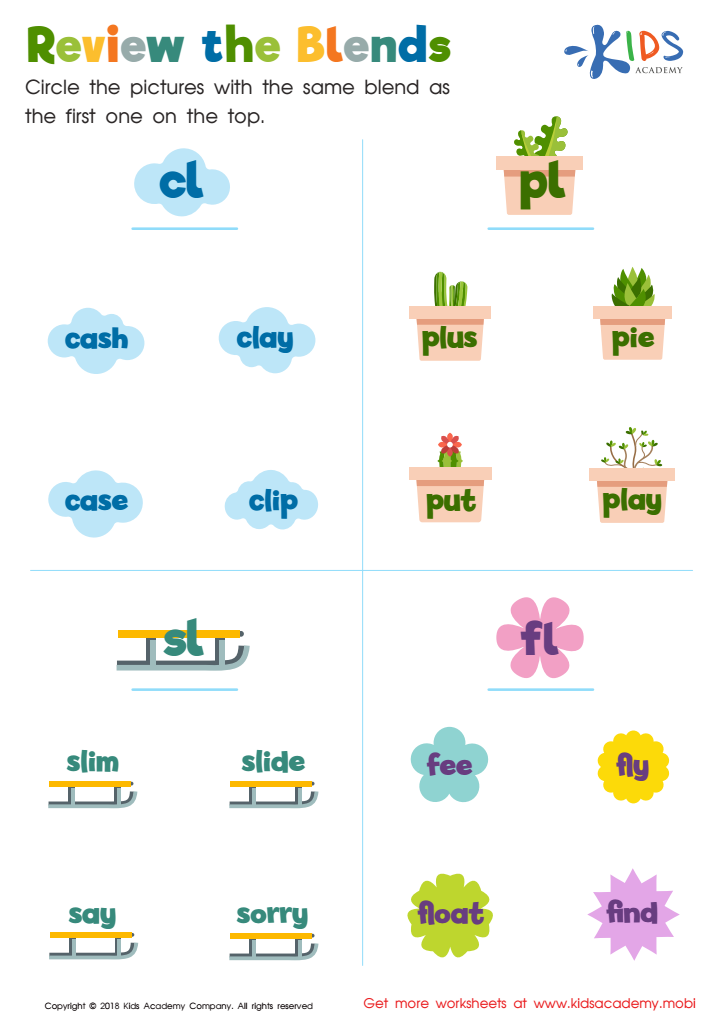Normal Initial and Final Consonant Blends Worksheets for Ages 5-8
5 filtered results
-
From - To
Discover our engaging Normal Initial and Final Consonant Blends Worksheets, specially designed for young learners aged 5-8. These worksheets provide a fun and interactive way to enhance phonemic awareness, helping children develop essential reading and spelling skills. Through a variety of exercises, students will practice identifying, completing, and using consonant blends in words, fostering both confidence and fluency. Perfect for classroom activities or at-home learning, our user-friendly format encourages independent practice and mastery. Take the first steps towards literacy success with our expertly crafted worksheets that make learning enjoyable and effective. Start exploring today for a brighter reading future!


Find The Missing Word Worksheet


Blending Consonants: "Fl", "Bl" and "Gl" Printable


L Blends: "Pl", "Cl" and "Sl" Printable


Consonant Blends: "Dr" and "Tr" Printable


Review the Blends Worksheet
Understanding normal initial and final consonant blends is crucial for parents and teachers of children aged 5-8 as they form foundational skills essential for reading and language development. Consonant blends, such as "st" in "stop" or "nd" in "band," involve combining two or more consonants whose specific sounds blend but keep their distinct identities. Teaching these blends enhances phonemic awareness, enabling children to recognize and decode words more efficiently.
Strong phonetic skills foster confidence in young readers, making it easier for them to tackle more complex vocabulary as they progress through school. Mastery of consonant blends also lays the groundwork for spelling and writing, helping students construct clearer communication. Moreover, grasping these blends aids in phonics, a critical approach for systematic reading instruction.
Parents and teachers can support blend recognition through fun activities, interactive games, and word play, cultivating a more engaging learning environment. This focus on consonant blends not only boosts literacy skills but also contributes to overall cognitive development, setting children on a path to academic success. Thus, prioritizing consonant blends in early education is vital for equipping students with the essential tools for effective communication and lifelong learning.
 Assign to My Students
Assign to My Students










